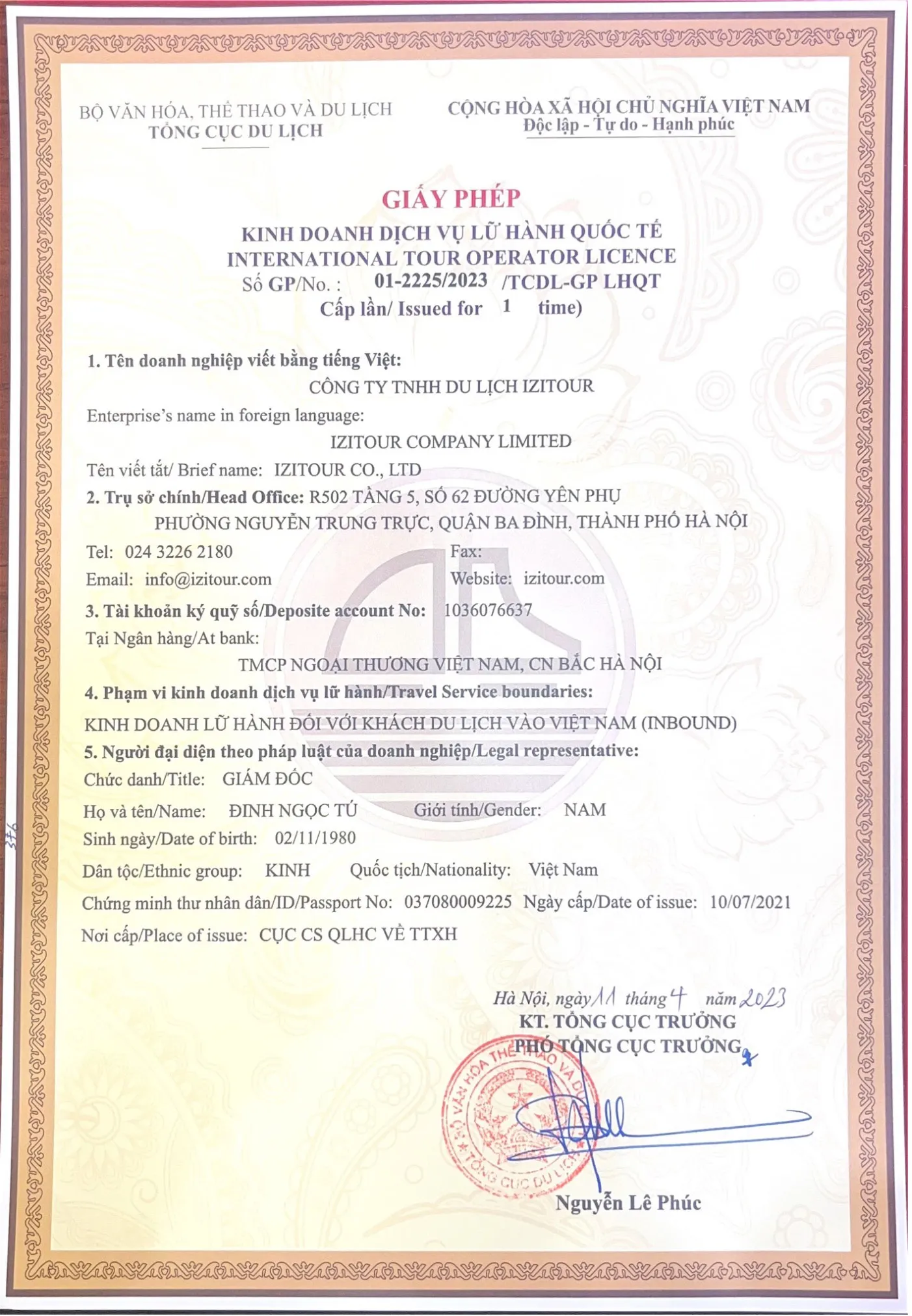Southern cuisine is not all about Saigon. Let's go to the Southwest of Vietnam and discover top Mekong food that is a part of Mekong Delta culture.
Vietnam is truly a destination for foodies. From North to South, the landscape is different, with outstanding scenic beauty, and so is the cuisine. Stopping by the Southwest of Vietnam (Mien Tay or Mekong Delta), you’ll find that Mekong Delta's busy atmosphere is mostly on the Mekong River. With the abundance of rice supplies and freshwater fish and crab,... foodies will be satisfied by the unique flavor of this region. Discover that flavor by reading through the best Mekong food in our article below.
- 1. Hu Tieu (rice noodles)
- 2. Bun Mam (fermented fish noodle soup) and Lau Mam (fermented fish hotpot)
- 3. Banh Xeo (sizzling pancake)
- 4. Ca Tai Tuong (Fried Elephant Ear Fish)
- 5. Banh Canh Cua (Crab noodles)
- 6. Banh Bo Thot Not (Palm sugar honeycomb cake)
- 7. Banh Khot (Mini Rice Pancake)
- 8. Com Tam (Broken rice)
- 9. Banh Cong
- 10. Bun Nuoc Leo (Noodles with fish broth)
1. Hu Tieu (rice noodles)
Let's start discovering Mekong cuisine with a bowl of Hu Tieu. ‘Hu tieu’ comes from the Teochew language (or Chaozhou) and is transcribed as such in the Vietnamese dialect. Although Khmer and Cambodian people are believed to have invented ‘hu tieu’, Chinese Phnom Penh residents actually introduced it. Chinese “hu tieu mem” noodles are soft, flat, slippery, and slightly chewy like Vietnamese pho noodles. Southern Vietnamese disliked this noodle because it made ‘hu tieu’ taste like ‘pho’. The rich supply of rice in the Mekong Delta led them to make “hu tieu dai” (chewy noodles), which are chewier, more translucent, and made from rice starch. These noodles are smaller than ‘pho’ or Chinese soft noodles.
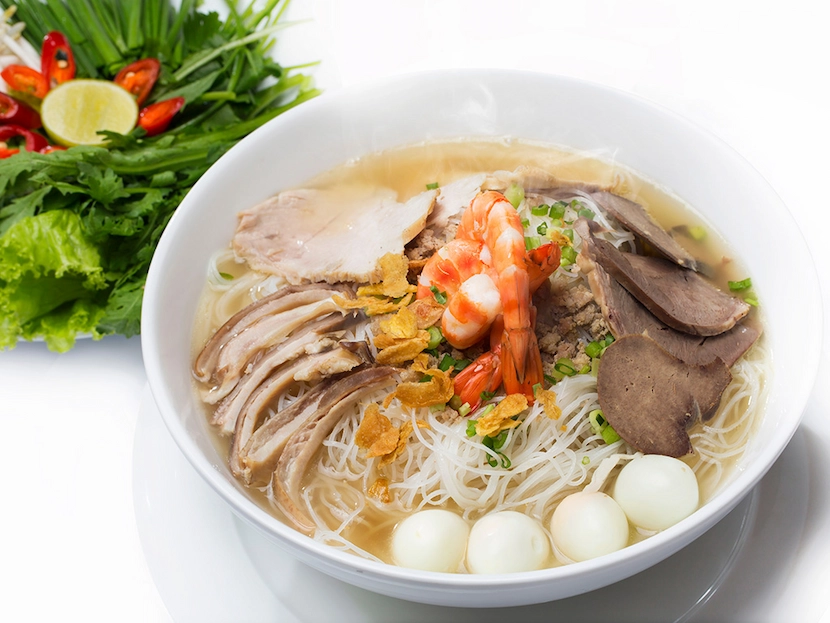
The Southern Vietnamese adapted cooking methods, ingredients, and local flavors and vegetables to create ‘hu tieu’ that embodies their culinary culture. ‘Hu tieu’ in the south is considered one of the top Mekong food delicacies, as ‘pho' in the north and ‘bun bo Hue’ in the Central.
There are so many types of ‘hu tieu' you can find in the Mekong Delta such as ‘Hu tieu Nam Vang', ‘Hu tieu My Tho', ‘Hu tieu Sa Dec',... ‘Hu tieu' can be served in 2 ways: ‘nuoc’ (with the broth over everything) and ‘kho' (dry version, with the separately served broth). There will be a slight difference in the ingredients in different ‘hu tieu' versions. However, a basic bowl of ‘hu tieu' cannot miss the chewy noodles (each region can make ‘hu tieu' noodles with different chewiness), umami broth made from pork bone, vegetables and regional seasoning, toppings (normally pork lean, organs, shrimps, Chinese chives and garlic flakes) and a plate of sided raw herbs. For the dry version, ‘hu tieu' ingredients are incorporated by a perfect balance of hoisin sauce and soy sauce, giving the dish the shiny caramel color.
2. Bun Mam (fermented fish noodle soup) and Lau Mam (fermented fish hotpot)
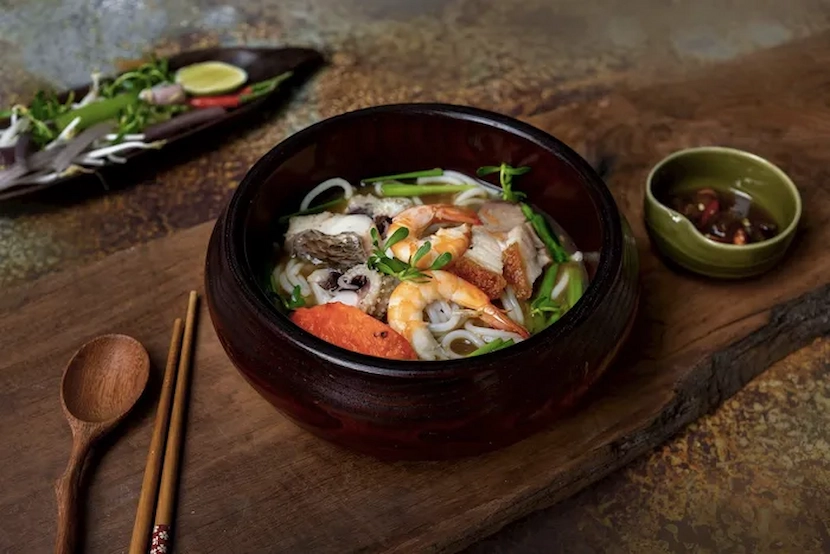
The province of Soc Trang is credited as the birthplace of the traditional Vietnamese meal 'bun mam'. This meal has 'bun' (rice vermicelli noodles), a broth made from fermented fish stock, fish cakes, roasted pork belly, squid, shrimp, catfish, and eggplant (which soaks up the broth).
Fresh herbs including ‘rau dang’ (prostrate knotweed), bean sprouts, chives, banana blossom, keo neo (yellow velvetleaf), ‘rau nhut’ (water mimosa), and ‘rau muong’ (morning glory) are among the most crucial components. The smells of ‘bun mam’ are pretty intense and savory, mostly because of ‘mam bo hoc' - fermented fish paste. This is the main ingredient for many iconic Mekong noodle dishes. Fermented fish paste was formerly a common technique for natives to utilize the overabundance of fish they gathered.
Fermented fish play a frequent role in Mekong cuisine. To create fermented fish paste, fresh fish and salt are combined in a certain ratio and stored in a jar for a period of time. The jar is then sealed and put into a dark, cold, and dry location for 30 days. Thirty days later, the fish within will have been broken down by the natural fermentation process to the consistency of a paste.
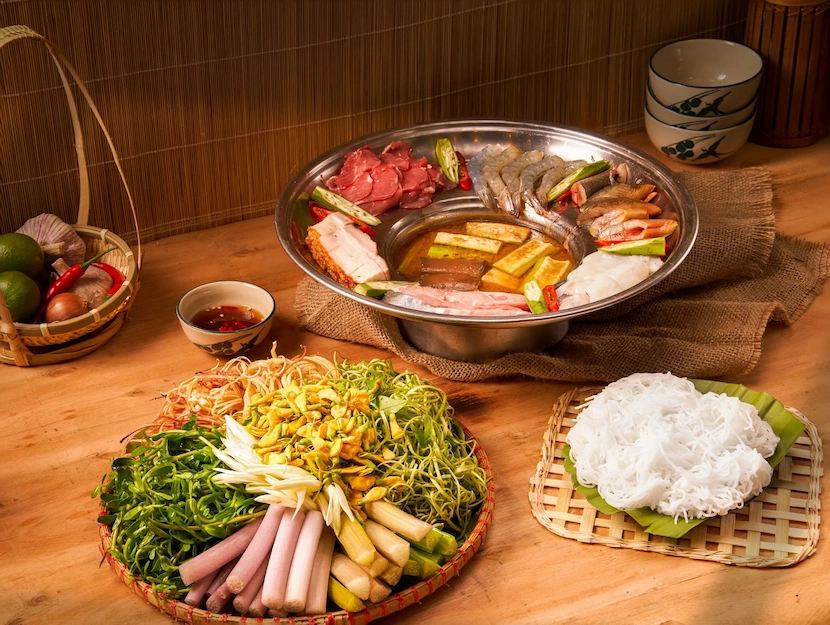
While eating this dish, lime wedges and red chilly slices are standard accompaniments. The sided veggies should be taken from the platter and tossed into the broth. When you're ready to eat, stir the vegetables into the soup and roll the noodles from the bottom so that the broth, herbs, and noodles can all combine. Appreciate the soup's scent before diving in. It is such an amazing experience.
With all that taste packed into one serving, you won't want to wash this down with a soft drink. Tea, either hot or cold, is required with this little masterpiece of culinary art. Cold tea or water will be a welcome companion when your taste buds explode from the peppers, lime, fish sauce, and chili in the soup. You can get complimentary iced tea at most places if you ask for it.
If you have more time and want to enjoy the tastiness of this broth longer, consider Lau Mam (fermented fish hotpot). Its broth is quite the same as ‘bun mam' but can include many types of ‘mam'. When making fermented fish hotpot broth, water and fermented fish paste are boiled together with a broad range of spices to mask the fermented fish paste's strong flavor. Coconut water is also added in some regions. The hotpot is served with regional Mekong Delta vegetables.
3. Banh Xeo (sizzling pancake)
Banh Xeo makes Mekong cuisine more appealing to the taste buds. Even though you can get this cuisine all across Vietnam, the one you discover in the Mekong Delta (banh xeo Mien Tay) will blow your mind with its massive portions of pork, bean sprouts, and shrimp. There is no doubt that ‘banh xeo' should be on the list of top Mekong foods.
The generous and casual lifestyle of Southerners is reflected in Mekong Delta ‘banh xeo’s oversized portions and a wide variety of fillings. Mekong Delta pancakes can be double or triple the size of their central Vietnam counterparts and are significantly thinner.
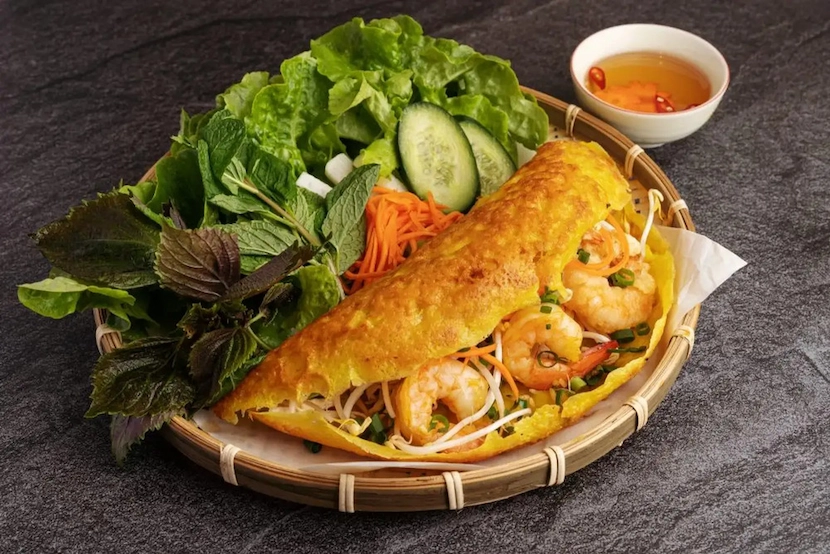
Thanks to the region's favorable tropical monsoon environment and abundance of locally grown ingredients, ‘banh xeo’ Mien Tay may be prepared in a wide variety of creative ways. Turmeric powder and coconut milk give the batter a bright yellow hue, a pleasant coconut aroma, and a smooth, lingering flavor. Thin and crunchy on the edges, the crust is soft and chewy in the middle. Ingredients for the stuffing include pork belly, shrimp, green beans, and jicama. ‘Banh xeo’ is prepared using regionally specific ingredients in several areas of the Mekong Delta, such as Ben Tre and My Tho. As an alternative to pork, duck meat may be used as the major protein, and ‘cu hu dua’, the coconut's inner top part, would be used. This particular ingredient is only gathered once per coconut tree.
Pancakes are typically served with a selection of fresh greens, such as lettuce, Vietnamese basil, mint, fishy leaves, cucumber slices, and pickled carrots. ‘Banh xeo’ is often eaten in the South by wrapping the crust over the filling and veggies, then dunking it in sweet and sour chili garlic fish sauce and digging in for a hearty chunk.
4. Ca Tai Tuong (Fried Elephant Ear Fish)
The sagging, gray look of the gigantic gourami has earned it the nickname ’elephant ear fish’ (Ca Tai Tuong). Despite its unappealing appearance, the elephant ear fish remains one of the most popular dishes in the Mekong Delta and is often included in southern Vietnam trips as a representative sample of the excellent seafood available there.
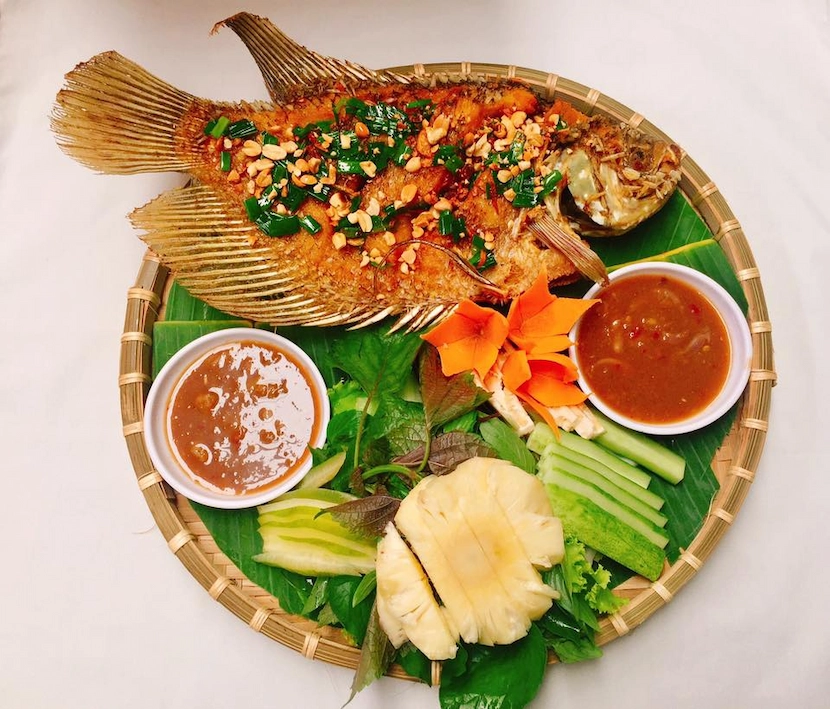
Scales, fins, and tails are typically included in the deep-fried whole fish that is served vertically on a stand for diners to pick apart with chopsticks. The crispiness of the skin and the tenderness of the flesh are heavenly tasty. To make it more complete, wrap the meat inside a rice paper piece lined with fresh herbs, noodles, sliced cucumber, and pickles. Typically, the rolls are served with a sweet and sour sauce that combines fish sauce, spicy chili peppers, and garlic. Occasionally, toasted ground peanuts are sprinkled over the fish just before serving, and fresh lime wedges are provided on the side to your taste as well.
5. Banh Canh Cua (Crab noodles)
‘Banh canh' refers to one type of noodle that is made from tapioca flour or a mixture of rice and tapioca flour. ‘Banh canh' is popularly consumed in the South of Vietnam besides ‘hu tieu'. ‘Banh canh cua' (banh canh with crab) is widely known in the Mekong Delta area and has become one of the best dishes of Mekong Delta. The broth of ‘Banh canh cua’ is heartier than one may anticipate from a Vietnamese noodle soup. Like the traditional American-Chinese sweet and sour soup, this one is transparent and thickened with tapioca. ‘Banh canh’ noodles are used in this dish; they're circular like a ‘bun’ but nearly as thick as a finger.
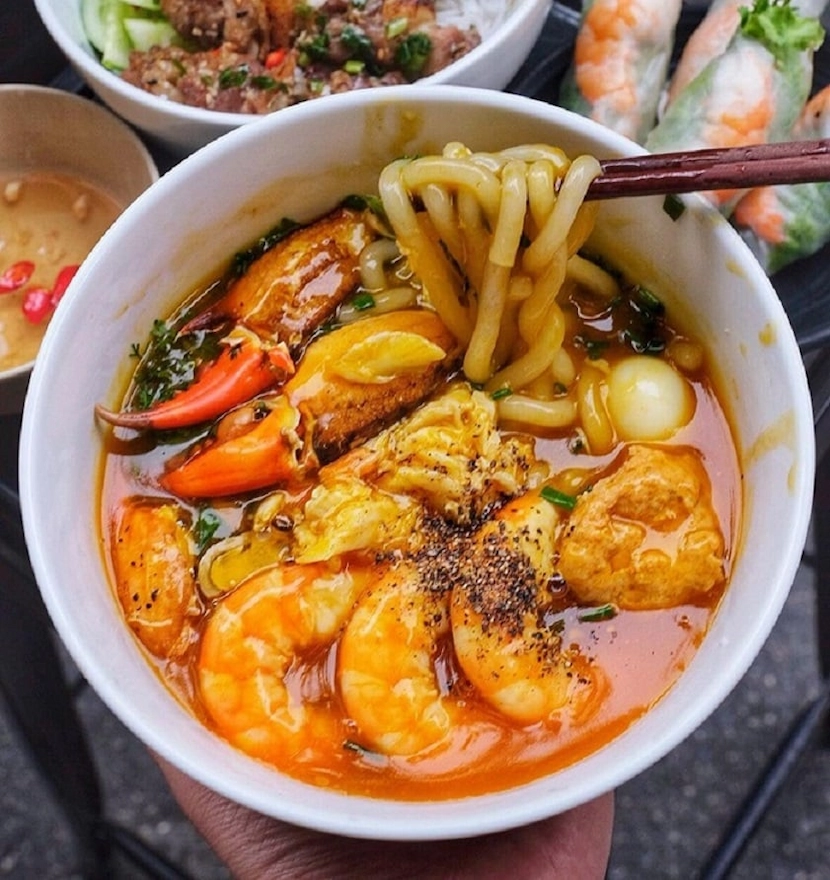
The sweetness of the broth comes from fresh crab and a touch of sugar. Pork bone, garlic, dried shrimp, and squid are also used in its preparation. Fresh herbs, green onion, sliced pork, shrimp, and a quail egg float in the soup.
If you're used to the freshwater crab crumbles in ‘bun rieu cua’ (Northern crab noodle soup), the fresh crab bites will be like manna from heaven.
6. Banh Bo Thot Not (Palm sugar honeycomb cake)
Honeycomb cake, also known as "banh bo" in Vietnam, is a sweet treat popular in Vietnam's southwestern area. It is commonly used in celebrations of ancestry and other familial events. Rice flour, coconut milk, oil, sugar, and yeast or bread starter are the main ingredients in a traditional Vietnamese honeycomb cake. This combination of ingredients was curated to produce a cake with the ideal balance of softness, chewiness, and sweetness. The expanding air pockets while baking give the cake a distinctive honeycomb structure.
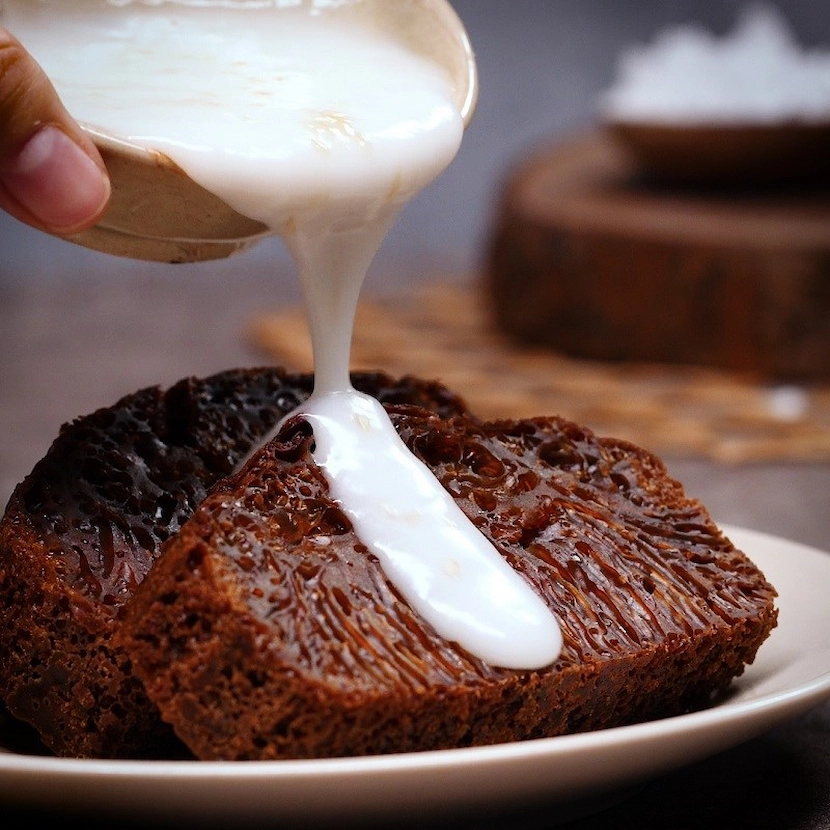
Vietnamese honeycomb cake is a delicious treat with a flavor profile that is uniquely reminiscent of pandan and coconut. It's unlike any other cake because of the unique patterns inside the crumb, which give the cake a light and bouncy quality. Honeycomb cake flavored with pandan essence. The extract is added to the batter, giving the dessert a refreshingly emerald tint. It also gives the cake an aromatic quality that is both floral and herbal. It's delicious on its own or with a hot beverage like tea or coffee.
7. Banh Khot (Mini Rice Pancake)
The delicious Vietnamese pancake known as 'banh khot' is prepared by pouring a thin batter made from rice flour into a specific terracotta 'banh khot' mold and cooking it over an open flame. After pouring the batter into the shape, you can add any savory toppings you choose. It is normally shrimp.
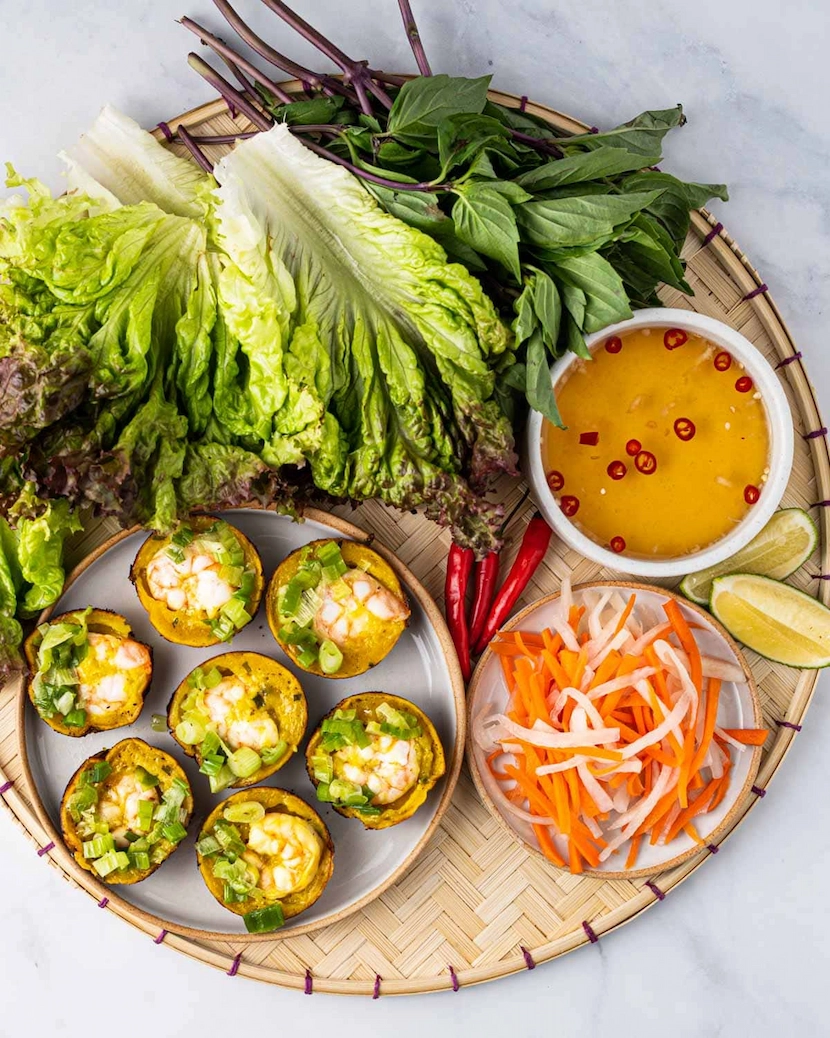
After being cooked, these little puffed pancakes are typically served with a portion of fragrant herbs and green vegetables for wrapping. Fish sauce is often served with ‘banh khot’ as well. Commonly mistaken for ‘banh can’ (as it is known in Central Vietnam), ‘banh khot’ in Mekong Delta is cooked in oil till crispy and includes turmeric, which gives it a lovely yellow hue, but is not as soft as ‘banh can’.
8. Com Tam (Broken rice)
Vietnamese broken rice is made mostly using broken rice and other components. Although these recipes go by a wide variety of names across Vietnam, their ingredients and preparation techniques are mostly consistent. For some of you, the name Com Tam may evoke images of Saigon. But if you make the journey to Long Xuyen, you may savor a dish of hot broken rice that is uniquely flavored by the region. Broken rice was formerly a staple food for low-income Mekong Delta residents. As broken rice is readily available in many families and has a long-lasting fullness effect, it was frequently used to cook during famine years when there was not enough nice rice to sell.

Throughout the southern provinces and the capital city of Saigon, 'Com Tam' has gained popularity since the beginning of Vietnam's urbanization in the early part of the twentieth century. Many sellers have adapted the ingredients of broken rice to better suit the taste of foreign customers as Saigon became a popular tourist destination with visitors from all over the world. As time went on, meals were also eaten with spoons and forks rather than cups and chopsticks.
A full-combo plate of ‘Com Tam' consists of main stars (broken rice, smoky and sweet pork chops or ribs, fish sauce) and assorted side dishes: pickles, spring onion oil, ‘cha trung' (Southern-style steamed meatloaf ), shredded pork.
9. Banh Cong
Banh Cong, which has its roots in Soc Trang, is a popular dish among foreign visitors to the Mekong Delta. The word "Cong" in "Banh Cong" refers to the cooking vessel. A "Cong" is a little metal milk spoon with a long handle. People in the Mekong Delta still utilize the "Cong" as a measurement system in commercial transactions. There are several different sizes of "Cong," including 1/2 'xi', 1 'xi'...(4 "xi" equals 1 liter), and the largest size, 2-liter 'Cong'.
There is just one standard size "Cong" for making ‘Banh Cong’, and it is 5 cm in diameter, 5 cm in height, and has a handle that is about 1 span long. In contrast to the cylindrical "Cong" used for measuring, the "Cong" used to fry 'Banh Cong' has a smaller base than the topping, which allows the finished dish to rise to the surface of the oil.
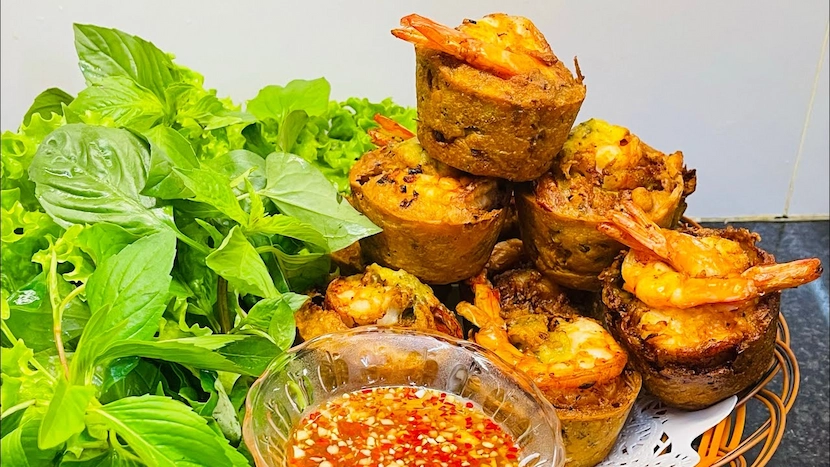
'Banh Cong' is created with a combination of rice flour and wheat flour to maintain its signature soft and crunchy texture. Banh Cong can be made using either rice flour or by soaking and grinding rice. Grounded rice flour retains its aromatic fragrance far longer than rice flour purchased from a store.
Sweet and sour fish sauce, lime, and minced chili is traditional dipping sauce for ‘Banh Cong’. Cucumber, carrot, and radish are all shredded and then topped with fish sauce. As other top Mekong food, ‘Banh Cong' cannot miss a few types of aromatic herbs: fish mint, lettuce, basil, herb mint…
10. Bun Nuoc Leo (Noodles with fish broth)
Another dish from Soc Trang, also a must-try for Mekong food - ‘Bun nuoc leo’. It is another type of noodle soup made with rice vermicelli. Soc Trang noodle soup is sometimes referred to as a "dish of solidarity" because it exemplifies the harmonious coexistence of the Kinh, Khmer, and Hoa peoples. The broth is a combination of lemongrass, fish sauce, and 'ngai bun', a tuber that looks like turmeric but is somewhat deeper in color. Fish pastes to add the distinctive flavor include gourami fish sauce (mam ca sac), 'mam bo hoc’ to intensify the broth. Even if you're not an adventure eater because you're put off by the fishy aroma, it is worth it when you smell and savor the piping hot noodle soup.
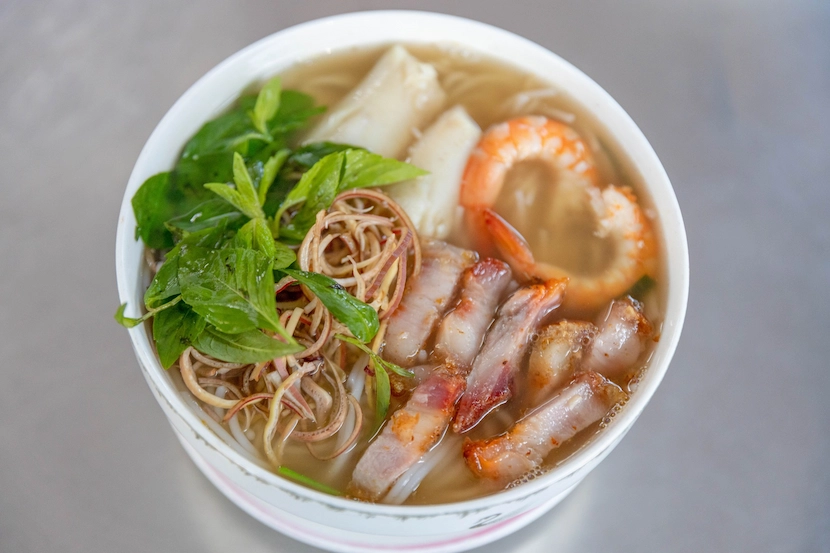
While the broth is the star, the same level of effort goes into preparing the veggies and other toppings for the perfect bowl of noodle soup. Vegetable toppings often include bean sprouts, chives, grated morning glory, shredded banana blossom, and a sprinkling of herbs. For protein toppings, there are three primary ingredients: boiling snakehead fish (with the flesh taken and the bones discarded), boiled shrimp (with the shells removed), and chopped roasted pork. Wild snakehead fish is used to produce a flavorful vermicelli soup, and only ground shrimp will do for the shrimp. You may also get ‘cha ca' a.k.a fried fish cakes, in several noodle restaurants.
Save this list of the best Mekong dishes and try it once you visit Mekong Delta!
We hope our article about Mekong foods is helpful for your Vietnam trip plans. If you have any further questions, feel free to leave a comment below or contact us via email: [email protected] or WhatsApp: +84 382 536 266 for instant assistance.
4 days in Mekong Delta from $188/pax
See more related articles:
- Best Time to Visit Ho Chi Minh City: Weather, Festivals and Travel Seasons
- Live Music in Saigon - The Best 7 Bars and Cafe to Chill 2024
- The Best South Vietnam Trip Itinerary Ideas For First Time Visitors
- Sa Dec Flower Village - The Most Instagrammable Flower Field in Vietnam
- Exploring Picturesque An Giang: Things to See and Do in Chau Doc and Long Xuyen
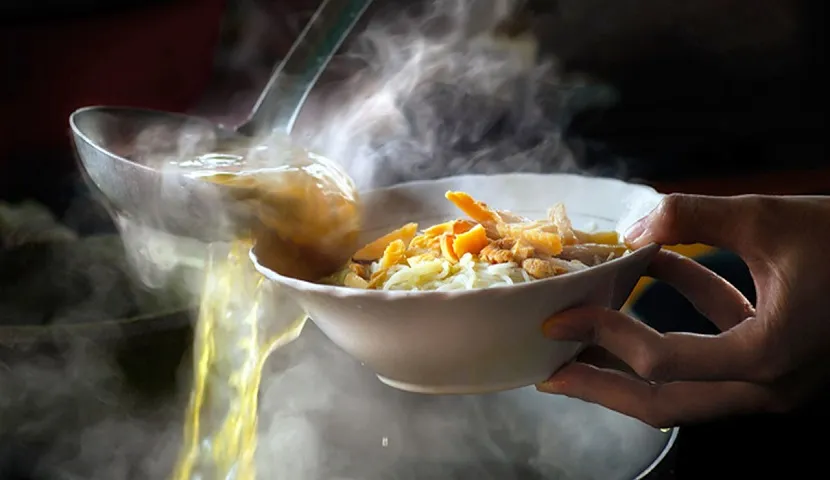







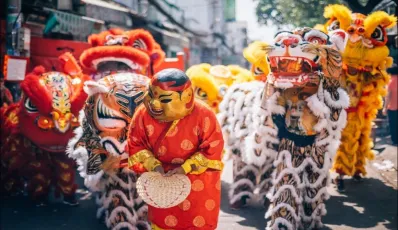


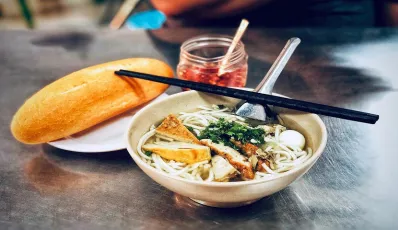


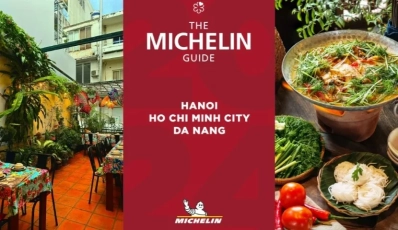

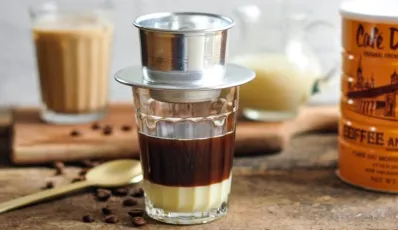
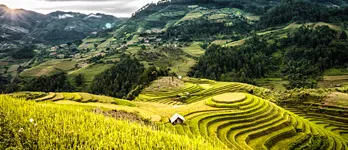
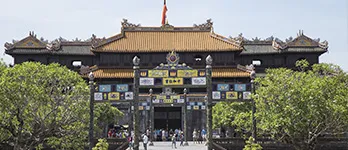
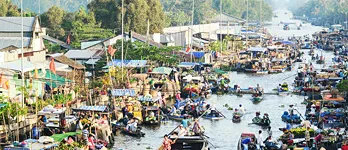

 TRAVELERS' CHOICE 2025
TRAVELERS' CHOICE 2025 